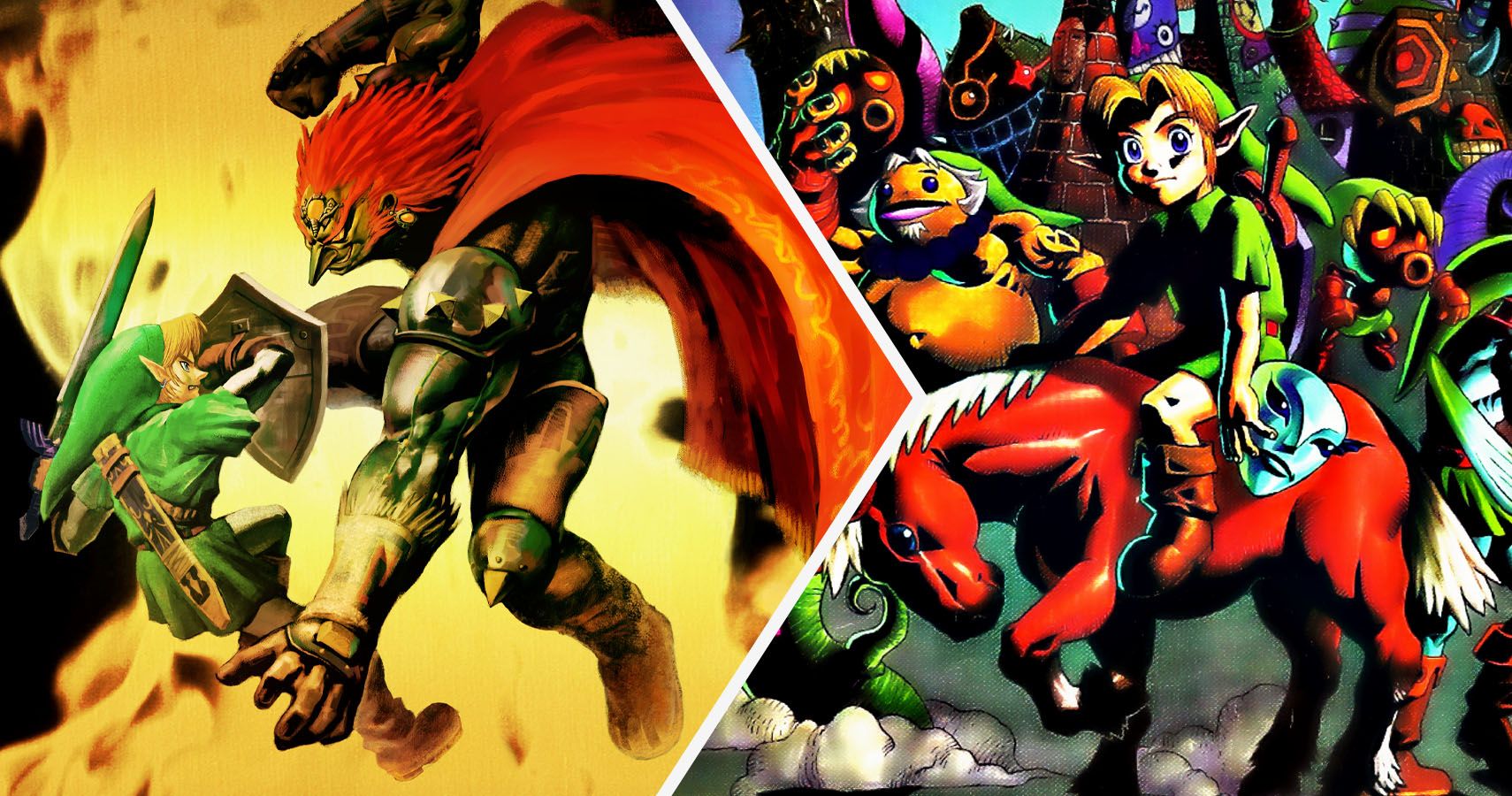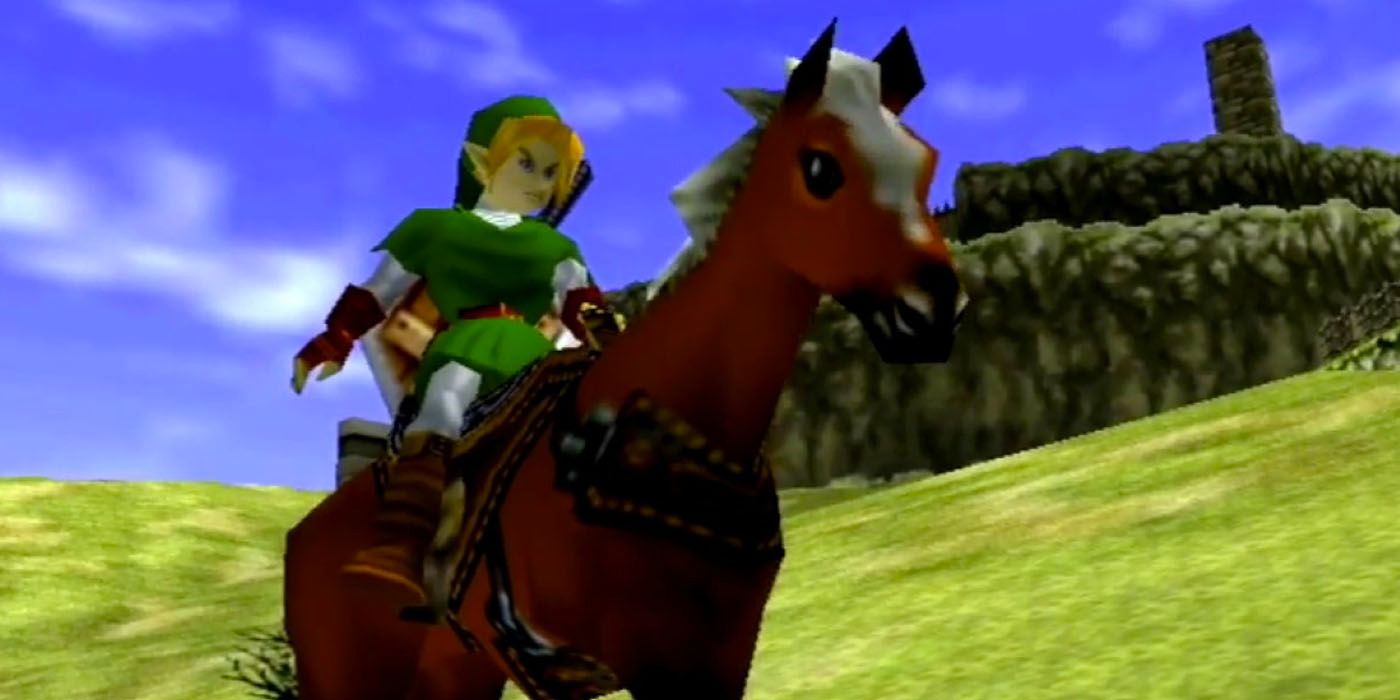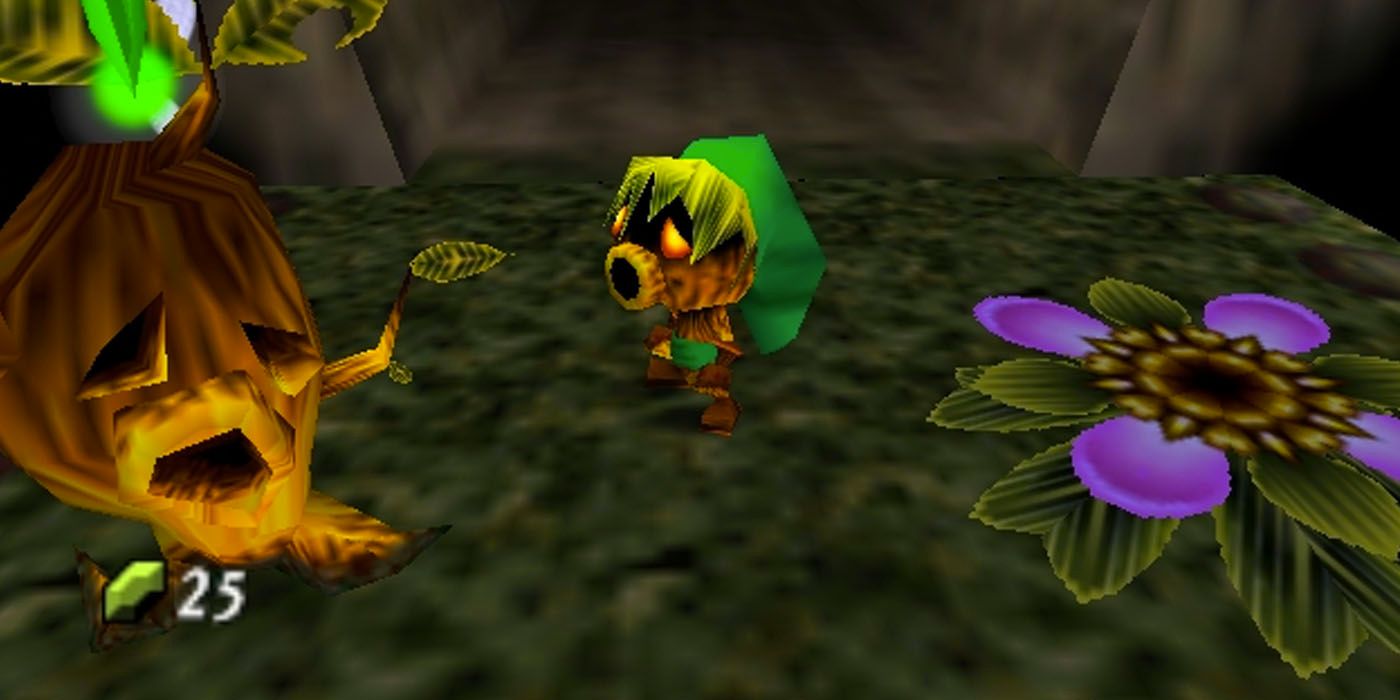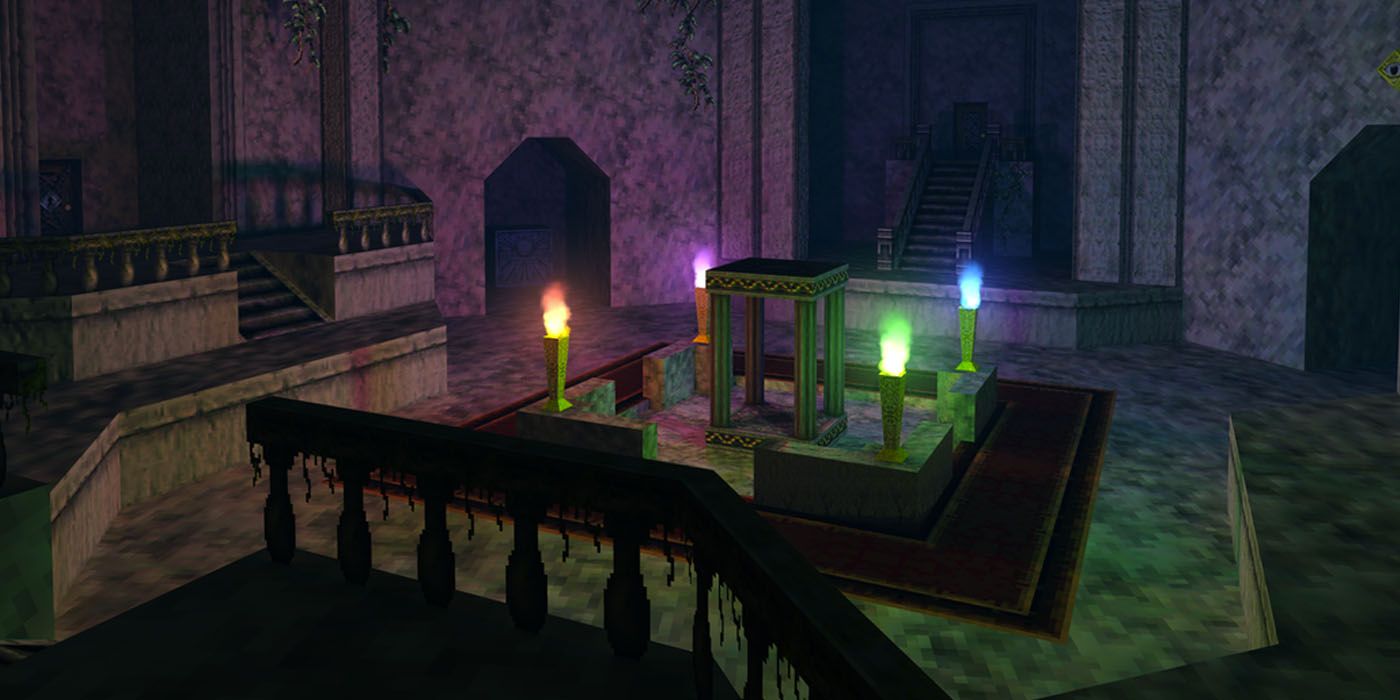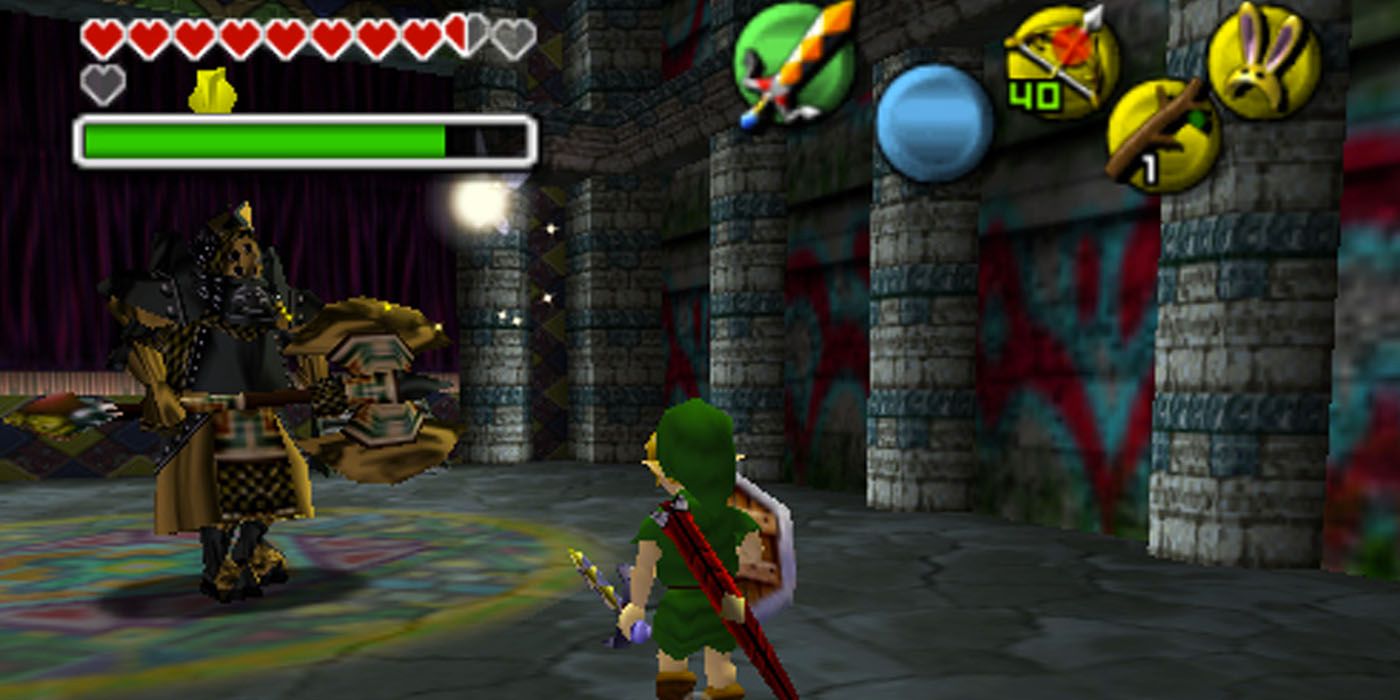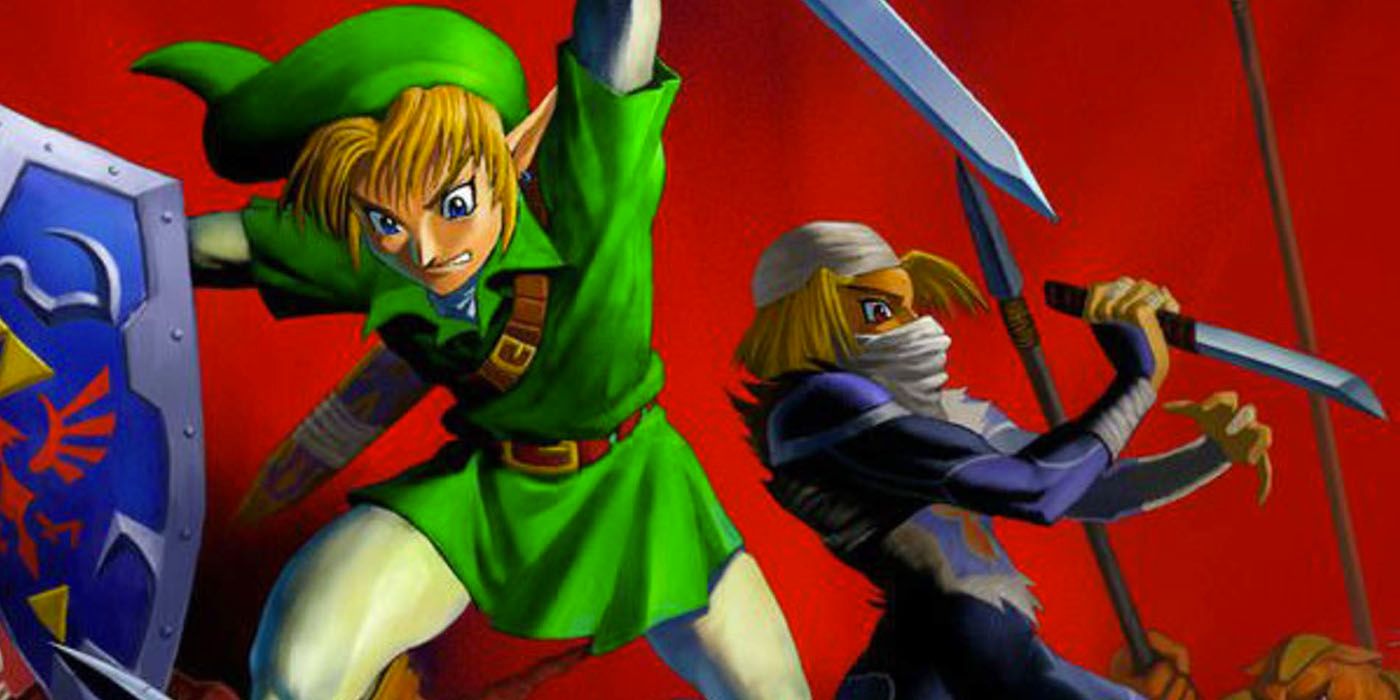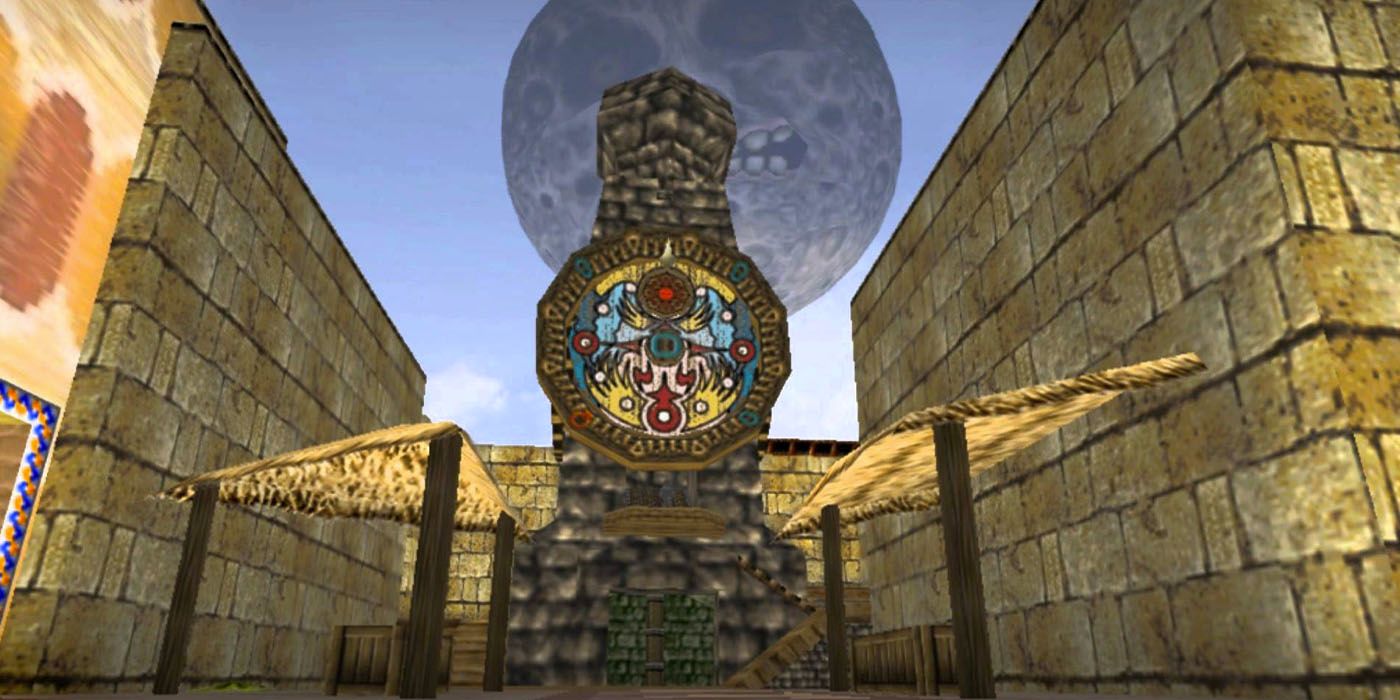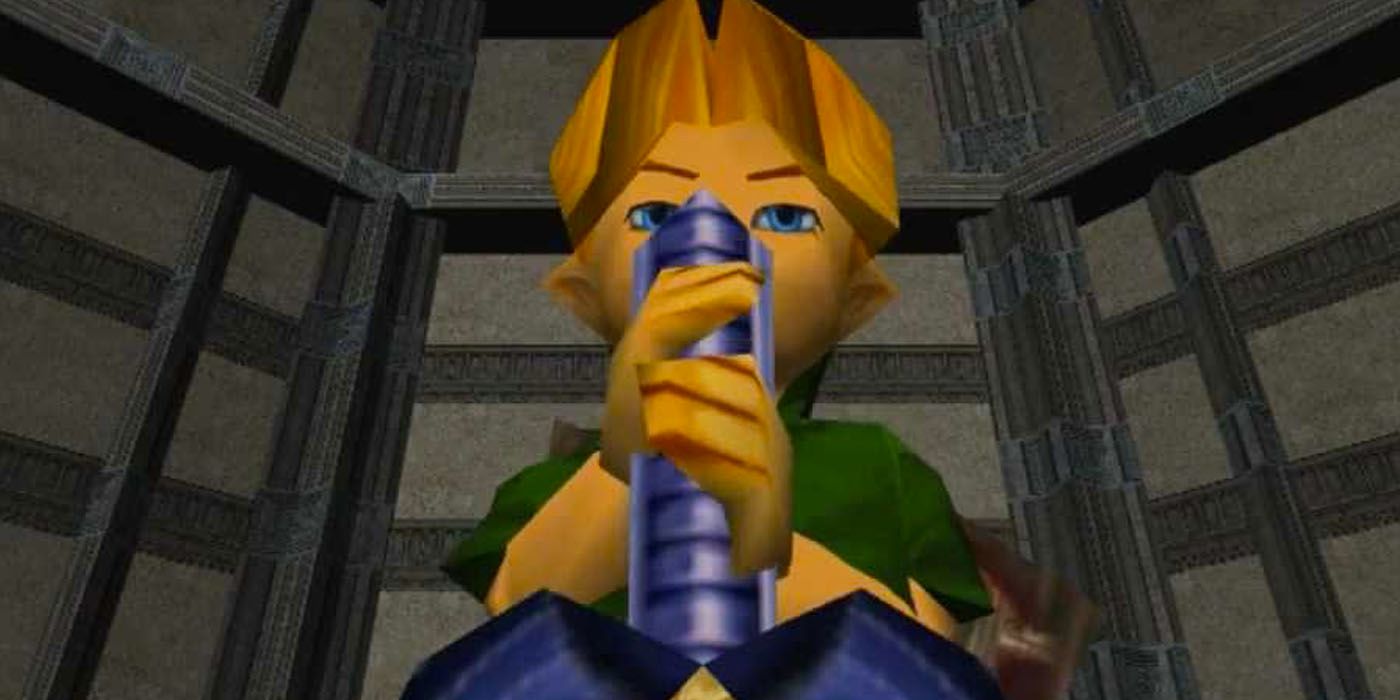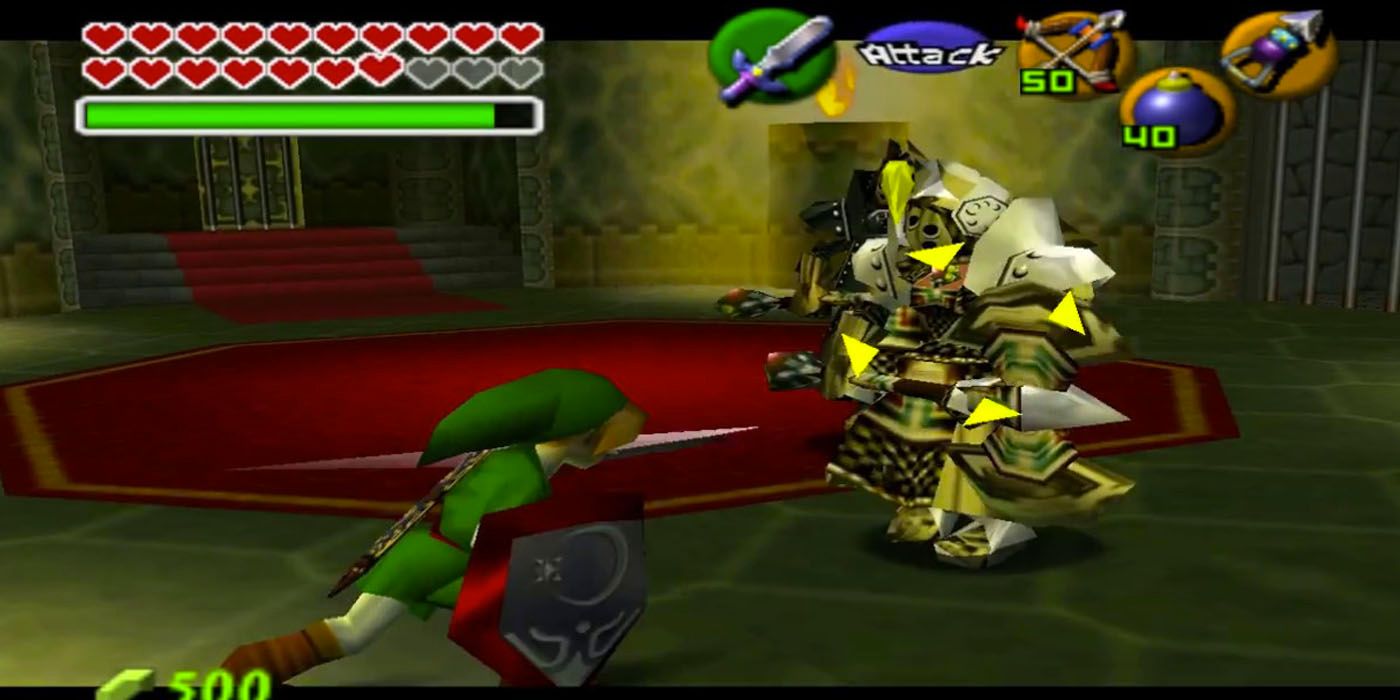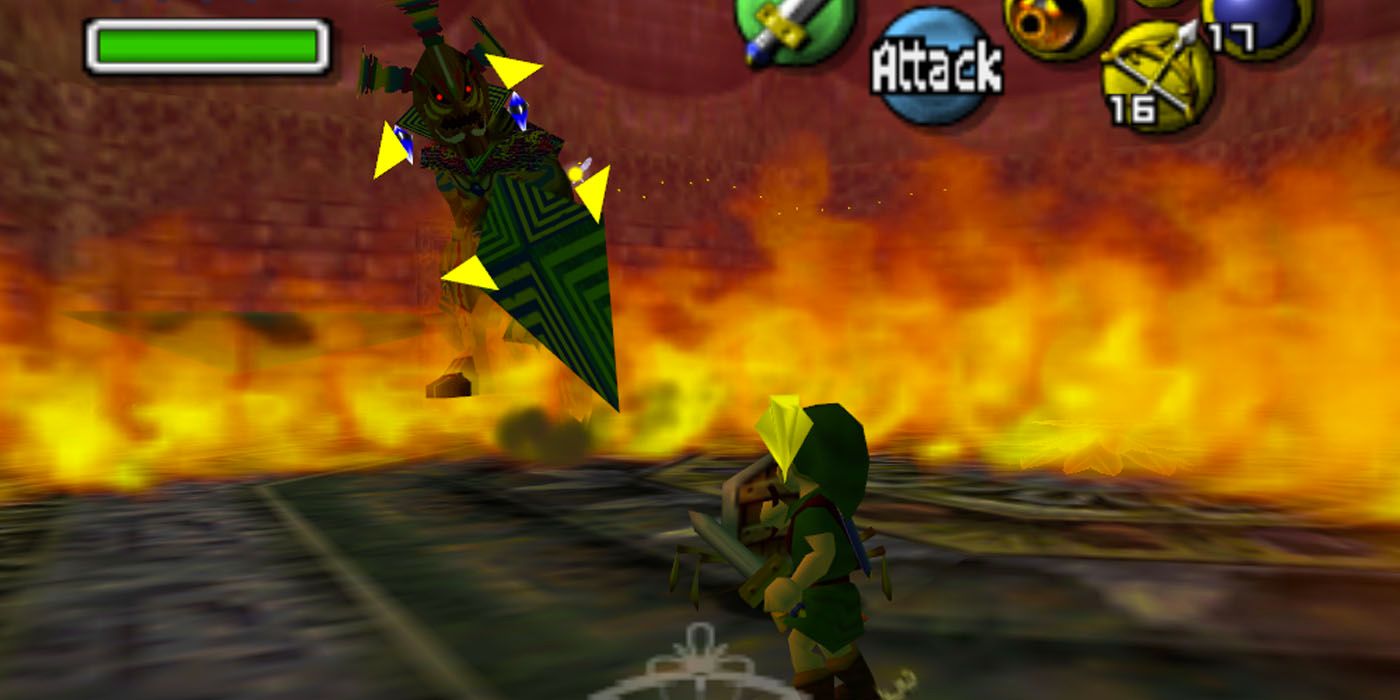Although home to some of the greatest video games ever made, the Nintendo 64’s legacy isn’t a particularly successful one. The 5th Generation of gaming saw Nintendo hemorrhage their third party support as Sony began their warpath with the wildly popular PlayStation. Nintendo’s first party titles didn’t suffer and they pioneered the industry’s transition into 3D.
In spite of the Nintendo 64’s lack of third party support and poor sales when compared to both the NES & SNES, the sheer strength of the N64’s best games were enough to keep it afloat. One of Nintendo’s premiere franchises, The Legend of Zelda was arguably at its best on the Nintendo 64– both Ocarina of Time & Majora’s Mask two of the greatest games ever made.
10 OoT: Classically Epic Story
Video game stories are often dismissed due to the medium’s infancy and recent generations desperately trying to ape film, but the notion that stories in gaming are somehow lesser is fallacious by design. One only need play through Ocarina of Time to understand the poignance video games are capable of pulling off in their storytelling.
Thematically rich, Ocarina of Time tells a classically epic story about the passage of time, what it means to leave childhood behind, othering, and the weight of being a hero. Link doesn’t say a word, but he manages to have an arc through subtext and by allowing the gameplay to drive the story forward. There’s even a layer of tragedy central to the narrative, linking the game closer to the literary epics of yore.
9 MM: Intimate Journey
A direct sequel to Ocarina of Time, Majora’s Mask features the same Link the lead role albeit starring in a far more intimate story. Majora’s Mask embraces individuality on a level Ocarina simply couldn’t, featuring full schedules, side quests, & arcs for virtually every single NPC in Termina.
Story wise, Majora’s Mask’s smaller scope allows the narrative to focus on character beats with a bit more care. While the script isn’t as thematically cohesive as Ocarina of Time, it’s considerably more emotional and tackles themes of death, grief, & loss with a tact even modern games often lack.
8 OoT: Dungeon Design
Ocarina of Time has one of the best set of dungeons in the entire franchise. As the first 3D Zelda, Ocarina’s developers felt compelled to make the most out of verticality and three dimensional space within their level design. Dungeons are dense and feature puzzles which genuinely force players to think about the box.
They’re also themed so well that the series would essentially follow Ocarina of Time’s template for years to come. Beyond the strong atmosphere, each dungeon has a unique idea– especially in the back half. The Forest Temple has the Poe hunt, the Water Temple is layered through water, and the Spirit Temple requires players to visit it as both young & adult Link.
7 MM: Difficulty Curve
While Majora’s Mask doesn’t have as many dungeons as Ocarina of Time, what four dungeons the game does have are incredibly well designed. More importantly, they’re designed with the expectation that players are coming fresh off Ocarina of Time– meaning MM’s four dungeons have a difficulty curve closer to the Spirit Temple than the Deku Tree.
This isn’t a bad thing by any means, however. 3D Zelda is extremely easy and Majora’s Mask stands out for its commitment to difficulty. With Ocarina of Time having introduced audiences to gameplay in a 3D space, Majora’s Mask felt more comfortable challenging them right out the gate.
6 OoT: Seven Years In Hyrule
Permanence in gaming isn’t something that’s seen often, especially in regards to the passage of time. Ocarina of Time gets around this by featuring time travel, but the mechanic doesn’t overshadow the fact Link falls into a seven year coma halfway through the game. While Link can return to the past, those seven years did happen.
Waking up in Hyrule seven years after Ganondorf has conquered it is an unnerving sight. The Hyrule Marketplace is overrun with Redeads, the Goron & Zora have becomes victims of genocide, and the Kokiri Forest has been infested with monsters. The second half is tonally much darker, lending consequence to Ganondorf’s early victory.
5 MM: Three Days In Termina
Set on a 72 hour loop, Majora’s Mask might not take players through seven years of tragedy, but it does showcase the pain of living in a very condensed three days. Each day in Termina is radically different from the last. There’s a naive happiness to the first day that’s dampened by the rain on the second day, only to succumb to pure terror on the third day.
Each day in Termina reflects a different tone, the atmosphere dynamically changing every few hours. NPCs react to the world around them regardless if Link is present, giving the impression that Termina is far more alive than Hyrule ever was.
4 OoT: Pacing
Ocarina of Time’s greatest strength is without a doubt its pacing. It’s often argued that the game’s slow text speed is a fault, but consider how it accents the cinematography in any given scene. There’s a commitment to movement to stillness that’s unseen outside of theater. Camera angles are sharp, appropriate for the medium, and there’s an emphasis on making the most out of the N64’s hardware.
On a gameplay level, Ocarina of Time simply knows to let players breathe. Beyond the second half allowing Link to tackle most Temples in any order, players have access to a massive amount of optional content the moment they step foot in Hyrule Field. Navi is the closest thing the game has to an interruption, but she becomes white noise after half an hour.
3 MM: Side Quests
With only four dungeons and major areas, Majora’s Mask clocks in on the shorter side– but that’s only if players exclusively stick to the story. The game is at its best when indulging in Termina’s many side quests. Basically every single NPC in the game is connected to some side quest, all of which offer Link a reward.
Whether players are nabbing Masks, Bottles, or Pieces of Heart, Majora’s Mask always knows how to reward and value a player’s time. Just as importantly, side quests are dynamic and feature cohesive arcs. Anju & Kafei’s side quest has some of the strongest character writing & puzzles in the franchise.
2 OoT: Mini-Bosses
Although Ocarina of Time is a fairly easy game in the grand scheme of things, it does manage to feature some challenging mini-bosses. From as early as the Lizalfos duels in Dodongo’s Cavern, OoT makes sure to test how well players can handle their own in combat. By the time Link becomes an adult, he’ll be dealing with Stalfos and Iron Knuckles.
Stalfos in particular are especially deadly as they wreak havoc on any players who refuse to use Z-Targeting. Iron Knuckles simply cut through an obscene amount of Hearts and actually gain a speed boost once Link has dealt enough damage. Majora’s Mask, on the other hand, falls back on Wizrobes one too many times.
1 MM: Boss Fights
This only applies to the original Nintendo 64 release as Majora’s Mask 3D made negative changes to the bosses across the board. In the original release, MM features some of the best 3D bosses in the franchise– actually allowing players to experiment with their tool kits.
Between fights like Odolwa which simply allows players to engage with bosses however they please and Twinmold where there’s an emphasis on spectacle, Majora’s Mask has incredibly memorable bosses. While not as epic, the three phase final boss against Majora makes for a much better gameplay challenge than the duel with Ganon at the end of Ocarina.

